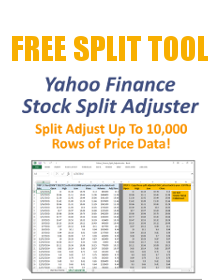 Portfolio software for Excel is ideal for serious investors looking to increase their returns and minimize their risks. There are various highly effective functions for this type of Excel tool, and also some pitfalls that you ought to avoid.
Portfolio software for Excel is ideal for serious investors looking to increase their returns and minimize their risks. There are various highly effective functions for this type of Excel tool, and also some pitfalls that you ought to avoid.
Excel portfolio software is normally used to analyze a portfolio of investments against a market benchmark, whether it’s an overall market index such as S&P 500, FTSE 100, or DAX, or even the Brazil real estate construction index. This benchmarking process is done in Excel to see how an investment portfolio performed versus the market in the past. Analysts may use the results to project expected returns into the future with the assumption there won’t be any structural investment or industry changes. Over a number of years this can really help generate better risk-adjusted returns.
Portfolio optimization in Excel is helpful in running “what if” ad hoc analyses to decide which securities could add better returns or lower risk of the portfolio. This has two primary approaches, including optimization simulations i.e. find the optimum quantity of X, Y, and Z, and user-defined scenarios i.e. what effect would it have on the portfolio if I add one thousand shares of security X to my portfolio. This analysis requires you to pull lots of historical price data in to Excel. At a minimum you will need beta, volatility, or correlation matrix data as inputs.
Another use of Excel portfolio software is to calculate risk and return numbers like Value at Risk (VaR), and derived ratios such as Sharpe or Treynor ratios. VaR measures potential portfolio losses down the road, stated in currency value at a predefined particular confidence interval (i.e. $1.5 million with 95% confidence). Sharpe, Treynor, Jensen Alpha, and other measures are employed to compare different portfolios against one another and determine if the portfolio manager is underperforming against his or her peers.
It is important to understand the limitations of Excel for this purpose. No tool or technique is able to predict tomorrow with a high level of accuracy. Regardless of the underlying model used, no approach can predict the portfolio’s future returns with one hundred percent accuracy, though it has been well proven that such tools will have some helpful predictive value. Another restriction is computing speed and data cost; the larger and more complex a portfolio gets, the more varied the potential risk-return permutations. This increases demands for data, Excel’s storage space, and CPU power/RAM. In Excel is much better to utilize less intricate models along with aggregation or proxy methods like Principal Components Analysis. This type of Excel project is not for the faint of heart.
Assuming you have a smaller portfolio than the average hedge fund, Excel portfolio software can be useful for smaller investors to help reduce their investment risk and increase returns. Properly optimizing your portfolio can really turbocharge your risk-adjusted returns over time.





